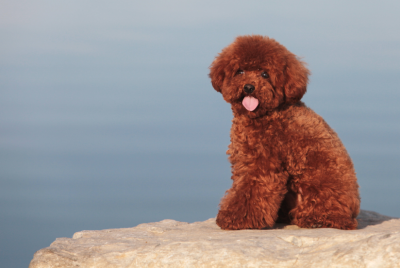How Often Should I Clean My Poodle’s Ears? A Complete Guide to Proper Ear Care
Introduction
If you’re a proud poodle owner, you know that these elegant and intelligent dogs require regular grooming to maintain their distinctive appearance and overall health. While many aspects of grooming are well-known, such as trimming their curly coats or keeping their nails tidy, the importance of ear cleaning is often overlooked. In this article, we’ll discuss the frequency how often should I clean my poodles ears and provide you with valuable insights to ensure your furry friend’s aural health.
How Often Should I Clean My Poodle’s Ears?
Cleaning your poodle’s ears regularly is crucial to prevent issues like infections, wax buildup, and discomfort. However, the exact frequency can vary based on factors such as your poodle’s activity level, coat type, and individual ear health. As a general guideline, you should aim to clean your poodle’s ears every two to four weeks. This interval strikes a balance between maintaining cleanliness and avoiding over-cleaning, which can disrupt the natural ear flora.
Factors to Consider
Several factors can influence how often you should clean your poodle’s ears. Let’s explore these factors in detail:
1. Coat Type: Poodles come in various coat types, such as curly, wavy, or corded. Dogs with longer, denser hair, like those with curly or corded coats, are more prone to ear issues due to reduced air circulation. Therefore, if your poodle has a curly or corded coat, you may need to clean their ears more frequently, around every two weeks.
2. Lifestyle and Activity Level: Active poodles that spend a lot of time outdoors, especially in dusty or grassy areas, may accumulate debris more quickly in their ears. If your poodle enjoys romping in the great outdoors, consider cleaning their ears more often, such as every one to two weeks.
3. Ear Health: Some poodles are predisposed to ear problems, such as allergies or excessive wax production. If your poodle has a history of ear issues, it’s essential to monitor their ears closely and clean them more frequently, as advised by your veterinarian.
4. Personal Observation: Regularly inspect your poodle’s ears to identify any signs of redness, discharge, or foul odor. If you notice these symptoms, it may indicate an underlying problem, and you should consult your vet. In such cases, your veterinarian may recommend more frequent cleaning until the issue resolves.
Step-by-Step Guide to Cleaning Your Poodle’s Ears
Cleaning your poodle’s ears is a straightforward process when done correctly. Here’s a step-by-step guide to help you through the process:
Step 1: Gather the necessary supplies: Before you start, make sure you have the following supplies ready:
– Ear cleanser specifically formulated for dogs (avoid using alcohol-based products)
– Cotton balls or pads
– Treats for rewards
Step 2: Find a calm environment: Choose a quiet space where your poodle feels comfortable and relaxed. This will make the process more enjoyable for both of you.
Step 3: Gently inspect the ears: Carefully examine your poodle’s ears for any signs of redness, swelling, or discharge. If you notice any abnormalities, it’s best to consult your vet before proceeding with the cleaning.
Step 4: Apply the ear cleanser: Following the instructions on the product, apply a small amount of the dog-friendly ear cleanser into your poodle’s ear canal. Gently massage the base of the ear to distribute the cleanser thoroughly.
Step 5: Wipe away the debris: Using a cotton ball or pad, gently wipe away any debris or excess cleanser from the visible part of your poodle’s ear. Remember to be gentle and avoid inserting anything into the ear canal, as this can cause injury.
Step 6: Reward your poodle: Once you’ve completed the cleaning process, praise your poodle and offer them a treat as a reward for their cooperation. This positive reinforcement will help them associate ear cleaning with a positive experience.
FAQs about Cleaning Your Poodle’s Ears
1. How can I tell if my poodle’s ears need cleaning?
You can look out for signs such as redness, swelling, a foul odor, excessive wax buildup, or your poodle scratching at their ears. If you notice any of these signs, it’s time to clean their ears.
2. Can I use regular human ear cleaners on my poodle?
No, it’s important to use ear cleansers specifically formulated for dogs. Human ear cleaners may contain ingredients that can be harmful to dogs’ ears.
3. Can I clean my poodle’s ears too often?
Yes, over-cleaning can strip away the natural oils in the ears, leading to dryness and irritation. Stick to the recommended frequency of every two to four weeks unless advised otherwise by your veterinarian.
4. What if my poodle resists ear cleaning?
If your poodle resists the process, try using positive reinforcement techniques such as treats and praise. Gradually introduce them to the process and make it a positive experience.
5. Should I trim the hair around my poodle’s ears?
Yes, trimming the hair around the ears can help improve air circulation and reduce the risk of debris getting trapped. Consult a professional groomer for proper trimming techniques.
6. Can I use Q-tips to clean my poodle’s ears?
No, it’s not recommended to use Q-tips or any other objects to clean your poodle’s ears. These can push debris further into the ear canal and potentially cause injury.
Conclusion
Maintaining the cleanliness and health of your poodle’s ears is an essential part of their overall care. By following the guidelines provided in this article and consulting with your veterinarian if necessary, you can establish a regular ear cleaning routine that ensures your poodle’s ears remain clean, comfortable, and free from issues. Remember, a healthy poodle is a happy poodle, and their ears deserve the care and attention they need to thrive.




